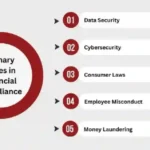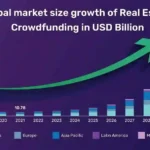Alright, buckle up, folks. We’re diving into the cloud and the edge. Not literally. That would be insane, and I’m not the one responsible if you try it. Anyway, here’s the kicker: both cloud computing and edge computing are the cool kids in the tech world, each with their own swagger, but they work in totally different ways. If you’ve ever wondered how these two compare, keep reading, ’cause I’m about to break it down.
A Quick Overview of Cloud Computing vs. Edge Computing
Before I go off on a tangent (I’ll probably get distracted—classic me), let’s get the basics out of the way. Cloud computing is like the big warehouse where all your stuff lives, except your “stuff” is data. Think of it as a giant filing cabinet, except you don’t have to worry about organizing anything. You send your data up there, and it’s processed and stored remotely.
Edge computing? That’s more like your backyard shed where your garden tools are kept. It’s all about local processing—closer to where the data’s coming from, so you don’t have to make a long trek to the “cloud” to get things done. It’s the difference between sending your files to a server in another state or handling them right where you are.
Cloud Computing: The Remote Hero
Let’s start with cloud computing, where all the magic happens. Cloud computing lets you run apps, store data, and process information using a network of servers you don’t have to touch. It’s like having an office with no physical walls, yet all the tools and resources you need are just a click away.
Here’s where cloud computing shines:
- Centralized Servers: All your data is sent to a huge server farm somewhere far away. You know, the kind of place you’d expect to see in a sci-fi movie, where rows of machines hum with activity.
- Scalability: Need more space or power? Just let your cloud provider know, and voilà, you’ve got more computing muscle.
- Accessible: The cloud is basically the internet’s garage—anything you need is there, as long as you can log in.
Now, don’t get me wrong. Cloud computing is like a pizza delivery service—it’s convenient and, when it works, it’s a dream. But sometimes, that pizza takes a little too long to arrive.
Edge Computing: Local, Fast, and Furious
Edge computing, though? That’s the local hero. Imagine if you could get the same pizza delivered to your doorstep right this second without waiting. That’s edge computing for you.
Here’s how edge computing differs:
- Local Data Processing: Edge computing’s all about proximity. Instead of sending your data to a faraway cloud server, you handle it right at the source. It’s like having a mini-computer (or “edge device”) that can process information on the spot.
- Low Latency: Latency—fancy term for “delay”—gets slashed with edge computing. If you need things done in real-time (like in autonomous cars or virtual reality), edge computing’s your best bet.
- Less Bandwidth Use: By processing things locally, you’re not clogging up the internet pipes. Think of it as using a bike for short trips instead of driving a car every time.
I swear, this is like that time I tried to use my phone for everything and realized I just needed to keep my old-school flip phone for calls. Edge computing? That’s your flip phone in a world of smartphones.
The Big Differences Between Cloud Computing vs. Edge Computing
You know how sometimes a burger’s just better when you’re eating it right by the grill? Yeah, edge computing’s like that, and cloud computing is more like the food delivery service. Both get the job done, but there’s a certain charm to the fresh-off-the-grill experience.
1. Where Data Lives
With cloud computing, you’re sending your data to the cloud (hence the name). That’s like mailing a letter across the country, hoping it gets to the right place. Sometimes it’s fast, other times, not so much.
Edge computing, on the other hand, processes data right where it’s generated—at the “edge.” It’s like getting a local postman who’s always just around the corner. Way faster. No waiting.
2. How Fast It Responds (Latency)
Cloud computing can be a little slow, mainly because you’re dealing with remote servers. Have you ever tried to load a page on a website, and it takes longer than expected? That’s latency in action.
Edge computing? It’s got zero chill for delays. Because everything’s processed right there, the response time is lightning fast. Like when you’re waiting for a pizza delivery, and the doorbell rings exactly when you’re thinking about getting hangry.
3. How Much You Can Scale
Cloud computing is perfect if you need tons of resources, like a massive hard drive or the power to run complex applications. No matter how big you get, you can scale up easily. Imagine building a warehouse for your inventory. When you need more space, you just build a bigger one.
Edge computing, however, has its limitations. It’s awesome for local stuff, but when you need a warehouse for everything, you might hit some walls. It’s more like renting a storage unit—you’ve got space, but it’s not as endless as a cloud.
4. How Safe Is It?
Cloud computing security is pretty tight, but let’s be honest, it’s still a target. I mean, when your data’s all stored in a central location, it’s bound to attract some attention from hackers. But, hey, cloud providers are on it, offering encryption and multi-factor authentication, so it’s safer than it was, like, 10 years ago.
Edge computing, on the flip side, gives you a bit more privacy, mainly because you’re dealing with more distributed devices. But that also means more potential for things to go wrong. Imagine securing a thousand backyard sheds. Yeah. Good luck.
The Big Winner: Cloud or Edge?
Okay, so here’s the deal: there’s no clear “winner” in this battle of Cloud Computing vs. Edge Computing. It’s not a “one-size-fits-all” situation.
If you’re running a big business and need scalable storage and resources, cloud computing’s your thing. If you’ve got a bunch of IoT devices, autonomous cars, or anything that needs quick, real-time processing? Edge computing’s got your back.
I learned the hard way—after my first IoT gadget tried to send data to the cloud every 5 seconds and I ended up with a broken router and an angry cat.
Fun Fact Break: Did You Know?
Did you know that Victorians thought ferns could ward off madness? Yeah, I thought that was just something I’d made up during a fever dream, but it’s real. Imagine talking to your fern while your edge computing handles all your local processing. They were onto something, maybe.
Wrapping It Up (Kinda)
So, here’s the thing: cloud computing vs. edge computing isn’t a battle where one wins and the other loses. They each have their time and place. If you’re all about having your data in one place, easy to access, cloud computing is your buddy. If you need things done fast, without delays, edge computing is there, keeping things local and quick.
Anyway, fast forward past three failed attempts to make a data-driven decision… Ultimately, the best approach? Use both. It’s like pizza and tacos—different, but somehow both great.










Important Posts
How Wearable Tech is Improving Health Monitoring
Cutting-Edge Tech & Gadgets Revolutionizing Tomorrow
Tech Trends & Innovations – Stay Ahead in Technology